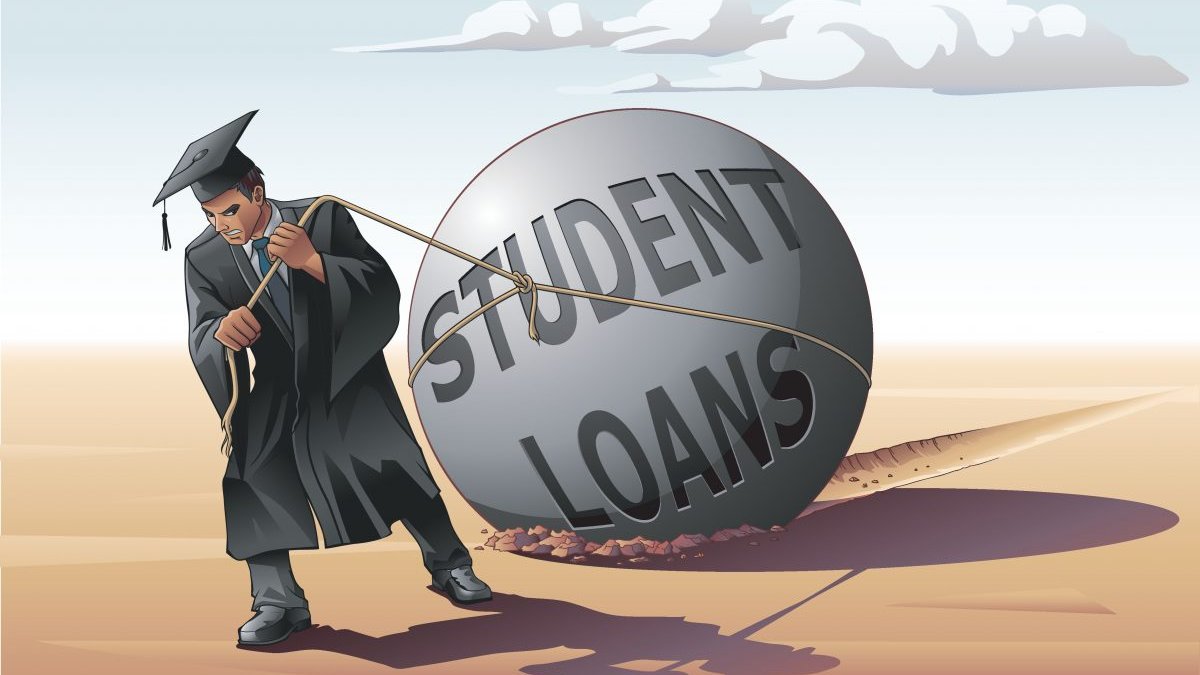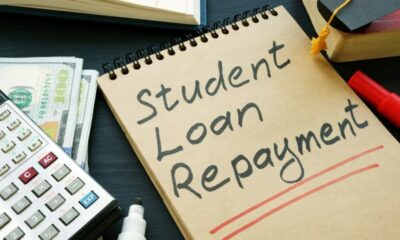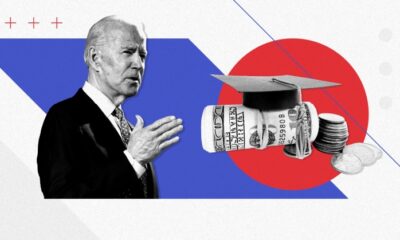Startup
How to Pay Off Student Loans Faster? Valuable Tips and Tricks

Debt from student loans can be very expensive, but if your finances are in order, you might be able to save some money by paying off your debt faster. Here are some tips and strategies for paying off student loans more quickly, depending on your goals and situation.
How to swiftly pay off student loans
These actions can assist you in reaching your goal of paying off student loans as quickly as possible in a way that won’t jeopardize your other financial commitments and needs.
Boost your monthly installment
Increase your monthly automatic payment amount by contacting your lender or loan servicer, logging into your online account, or finding space in your budget to make a consistently larger payment.
Let’s take an example where you have $20,000 in student debt with a 10-year repayment term, an average interest rate of 6%, and a monthly payment of about $222. This will give you an idea of how much you can save. You’ll pay roughly $6,647 in interest over 10 years.
You can, however, shorten your repayment plan by over three years and save about $2,258 in interest if you raise that monthly payment to $300.
Make payments every two weeks
Divide it in half and make a payment every two weeks rather than a single monthly installment. You will pay in two half payments for most of the year and three half payments for the other two. That is, you will pay an additional full monthly installment in this manner.
If we were to use the same loan terms as above but make biweekly payments rather than monthly ones, the loan would have a zero balance after nine years as opposed to ten. Moreover, you would save roughly $762 in interest throughout the loan.
Set up automatic payments
Make sure that your student loans are automatically paid off if you haven’t already. When you set up autopay, most lenders and loan servicers will give you an interest rate discount of between 0.25% and 0.50% in addition to saving you time.
It won’t have a significant impact—in the example above, your payment would decrease by a few dollars, and you would save about $300 in interest over ten years—but when paired with other strategies, it can be beneficial.
Apply the debt snowflake method
Using small savings you earn from everyday activities, such as coupons, cash-back rewards, payments for odd jobs, and found money, you can pay off your debt by employing the debt snowflake method.
Move $3 from your checking account to your savings account, for instance, if you use a coupon for $3 off laundry detergent. Continue this process for any additional minor savings you make during the month, and at the conclusion, apply the entire amount to your student loans.
With recurring savings, you can accomplish the same thing. Put your savings into the account every month, for instance, if you share a streaming service subscription with a friend or relative.
Make sure to request that the lender or loan servicer apply your payment to your principal balance if you choose this course of action. If not, the lender might regard it as a payment in advance for future installments.
Make use of windfalls
The debt snowflake method has some merit, particularly when savings mount up over time. However, it can also take a lot of time. If you’d prefer a less complicated method, think about allocating some or all of the annual windfalls you receive.
For example, you could apply some of your typical tax refund—the IRS estimates that in 2023, average refund amounts were $2,812—to your student loan balance. If you receive a performance bonus at work, you can carry out the same action.
Remember to let your lender or loan servicer know if you would like to apply the entire amount to your principal balance rather than having it count as a prepayment.
Boost your earnings
Your circumstances may dictate whether you are eligible for a raise at work. If not, you could apply for a better-paying job or request overtime hours.
If that isn’t an option and you have some free time, think about starting a side business that will enable you to make money rather quickly and reliably. For instance, driving for food delivery services or ridesharing can bring in some quick cash.
You might also think about making a side business out of talent or interest, but bear in mind that this strategy may not yield profits right away.
Think about refinancing your debt
Refinancing your federal student loans with a private lender will usually result in the loss of certain benefits, so it’s best to avoid doing so. However, you might not require access to income-driven repayment plans, forbearance and deferment options, or student loan forgiveness programs if you have a reliable source of income and stable employment.
If so, you may be able to get a lower interest rate by refinancing your loans with a private lender. Additionally, you might be able to get an accelerated plan by shortening the repayment period. Just make sure you have enough money to cover the increased monthly payment for the duration of the loan.
Let’s take an example where you can refinance your $20,000 student loan debt and receive an interest rate of 4% rather than 6%. You also choose a seven-year repayment term rather than the typical ten-year term for federal loans because you can afford it.
Making the switch would result in a monthly payment increase to roughly $273 from $222, but over the new repayment term, you would save approximately $3,681 in interest.
As long as you can obtain better terms with the refinance loan, there aren’t many drawbacks to refinancing your private student loans with a different lender.
You can save money and improve your cash flow sooner by paying off your student loans, which will allow you to focus on other crucial financial objectives. Examine these and other strategies to find the one that works best for you.
It is crucial to keep yourself safe and not become overly fixated on your goal when you explore the various options for quickening your student loan repayment schedule. Building an emergency fund should be your top priority since you cannot get the extra money you have paid for your loans back when you are in need. This will allow you to handle unforeseen expenses as they come up.
To optimize the condition and course of your entire financial plan, you should also keep giving top priority to other crucial financial objectives, such as saving for retirement and paying off high-interest debt.
-

 Sports4 weeks ago
Sports4 weeks agoFIFA Club World Cup 2025: Complete List of Qualified Teams and Groups
-

 Sports3 weeks ago
Sports3 weeks agoAl Ahly vs Inter Miami, 2025 FIFA Club World Cup – Preview, Prediction, Predicted Lineups and How to Watch
-
Health2 weeks ago
Back to Roots: Ayurveda Offers Natural Cure for Common Hair Woes
-

 Tech2 weeks ago
Tech2 weeks agoFrom Soil to Silicon: The Rise of Agriculture AI and Drone Innovations in 2025
-

 Sports3 weeks ago
Sports3 weeks agoFIVB Men’s Volleyball Nations League 2025: Full Schedule, Fixtures, Format, Teams, Pools and How to Watch
-

 Startup3 weeks ago
Startup3 weeks agoHow Instagram Is Driving Global Social Media Marketing Trends
-

 Television4 weeks ago
Television4 weeks agoTribeca Festival 2025: Date, Time, Lineups, Performances, Tickets and How to Watch
-

 Sports3 weeks ago
Sports3 weeks agoWorld Judo Championships 2025: Full Schedule, Date, Time, Key Athletes and How to Watch























